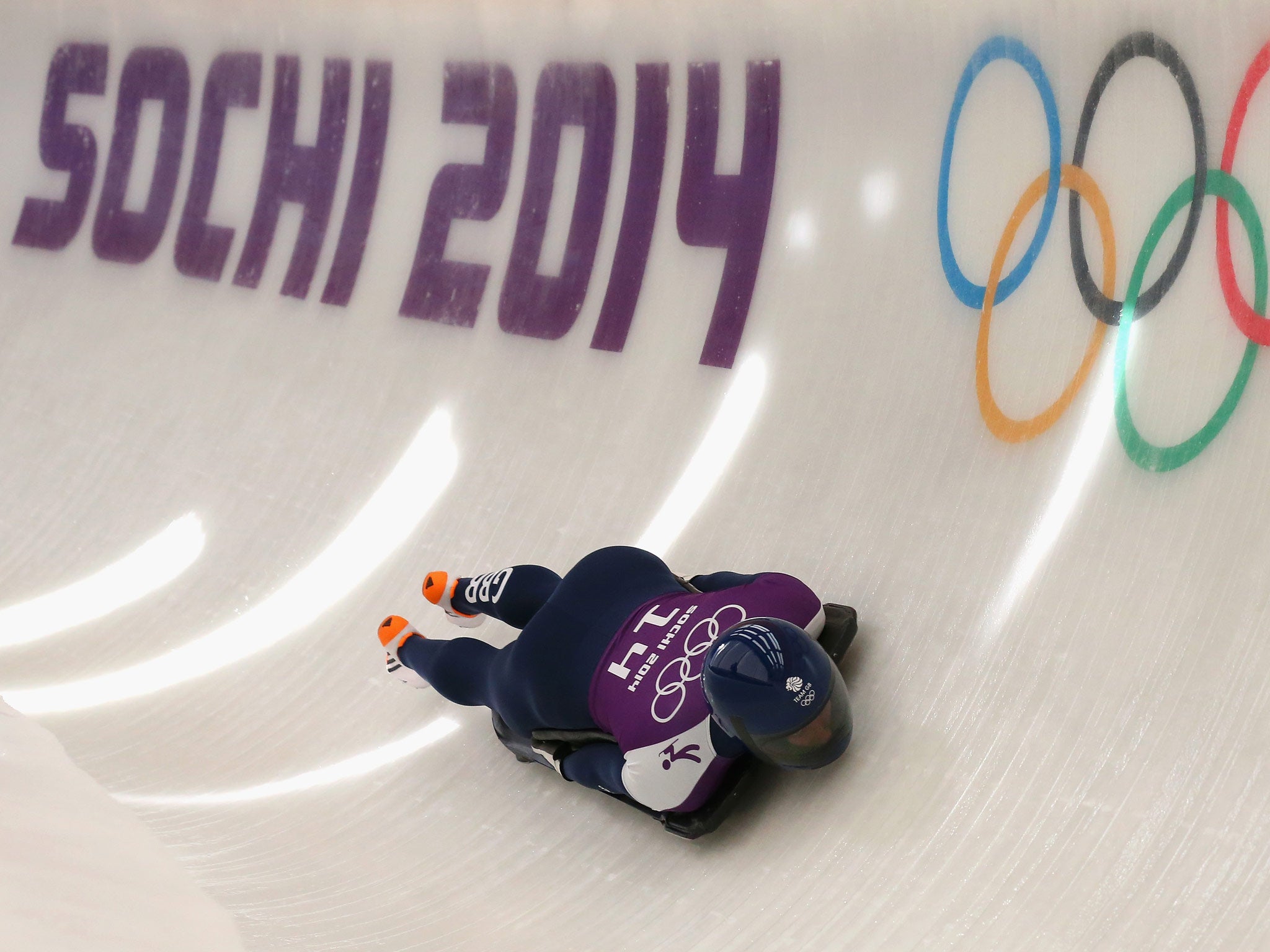Winter Olympics 2014: Lizzy Yarnold four minutes from realising golden ambition in the skeleton
The Brit will complete the first two of four runs on Thursday

Take one 25-year-old farmer’s daughter from Kent, a shed at the end of a single-track road on the edge of Bath, a history of success, stir together and add ice. If the ingredients mix successfully then the outcome, around teatime on Friday, will be that rarest of sights; a Briton standing proud on top of a Winter Olympic podium.
On Thursday morning Lizzy Yarnold will make the short journey from the athletes’ village – the Union flags pinned to the balconies revealing Team GB’s quarters – down the mountain to the Sanki Sliding Centre. There she will hurl herself face first on to her skeleton bob and reach speeds of up to 130kph as she completes the course in just under a minute.
Then she will go up and do it again. On Thursday she has two runs, Friday two more and at the end of them her collective time will determine whether she is the Olympic champion. Yarnold is four minutes from glory.
Skeleton has become Britain’s go-to winter sport, with a medal brought home from every Games at which it has been contested. It is an event in which Britain’s women have repeatedly shone. The sport was reintroduced for the 2002 Games – Alex Coomber won bronze. Four years on and Shelley Rudman – who also goes Thursday and will fancy her own medal chances – took silver in Turin. Then in Vancouver Amy Williams won gold, Britain’s first individual winter gold for 30 years.
A team of eight coaches and technicians have made the journey from the sport’s British base in Bath to help Yarnold and Rudman make final preparations. Skeleton receives nearly £3.5m worth of funding from UK Sport – only curling is backed with more public money (its funds from UK Sport are matched by Sport Scotland) – but around 40 per cent of that goes on travelling and that makes what goes on in Bath crucial. Like cycling, skeleton is a sport at which the careful application of technology can help make those marginal gains so beloved of Sir Dave Brailsford and Co.
Skeleton’s secret squirrel is Dave Moy, here in Sochi as team manager. Moy is a former sailor on secondment from BAE Systems. He helped fine-tune Williams’ sled, called Arthur, four years ago and has spent this Olympic cycle in that shed on the edge of the University of Bath’s playing fields fiddling with Yarnold’s sled, Mervyn.
So far this season it has all come together. Yarnold won the World Cup series, winning four of the eight races and finishing on the podium in seven of them (as Coomber did in 2002, only to finish third come Games time). It earned Yarnold the world No 1 ranking, ahead of the American Noelle Pikus-Pace, who has sat out four of the six practice runs as the US camp deny she has fitness issues, and Rudman. This is Rudman’s third Games. She went to Vancouver as Britain’s big hope, only to be upstaged by Williams, but is the current world champion. She is a threat to Yarnold, and raises the real chance of two Britons making the podium.
Pikus-Pace won the test event here last year, while the experienced German Anja Huber is another contender. Wary eyes, meanwhile, are trained on the Russians, who have been practising extensively on their home run – the longest in the world – over the last few months. Maria Orlova has twice been second-quickest in training this week.
Williams is here – as an ambassador for Team GB – and has watched Yarnold fly through practice. She has been quickest in four of her five training runs, sometimes by as much as a second.
“Everything has just clicked with her and she’s in that bubble,” said Williams, who is also Yarnold’s landlady in Bath. “She’s a new breed of skeleton girl – heavier and powerful, a lot of weight behind her. Her and Noelle are big, strong, heavy girls. Lizzy is also very aerodynamic – she’s flat and looks brilliant on the sled.”
Yarnold is the heaviest, and tallest, in the field, and most of the leading contenders are the heavier ones – except for Rudman. Yarnold is 75kg, Pikus-Pace is 73 and Orlova 72, while Rudman is 54.
When she wakes on Thursday Yarnold will know everything is in her favour. It is common practice on the World Cup circuit for the quickest in training to be the quickest on race day. Except this is two race days, and the biggest event of her young life.
“For me she’s proved the best out there – to do exactly the same as she’s been doing,” said Williams. “That’s the big thing – everyone knows it’s the Olympics and not to get freaked out by the pressure.
“Once you’re at the Games you have to remember that you’re the best in the world. I just want her to stand on that start line and do what she’s always done.”
Join our commenting forum
Join thought-provoking conversations, follow other Independent readers and see their replies
Comments